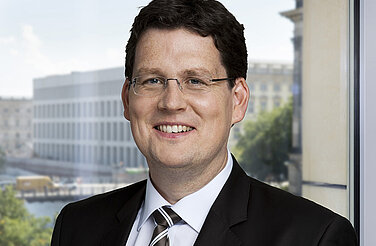-
Initial EEG investments will begin to pay out in 2023: From then on, the EEG surcharge will fall despite increasing shares of renewable energy.
The main reason is that starting in 2023, EEG funding for renewable plants from the early years with high feed-in tariffs starts to expire, and new renewable energy plants produce electricity at a considerably lower cost.
-
If the expansion of renewables continues at its ambitious pace, electricity costs will rice by 1-2 ct/kWh until 2023, but then fall by 2-4 ct/kWh by 2035.
The sum of the EEG surcharge and wholesale electricity price, after being adjusted for inflation, will climb from around 10 cent per kWh today to 11 to 12 cents in 2023 and then sink to 8 to 10 cents by 2035.
-
In 2035, electricity will cost the same as today, but 60 per cent will stem from renewable sources.
According to the current law, the share of renewables in electricity use is to rise from today’s 28 per cent to 55-60 per cent in 2035. Yet, the electricity cost in 2035 will be on the same level as today.
-
Main factors driving the EEG surcharge in the future will be the wholesale power price, the level of power demand, exemptions for industry and the amount of self-consumption.
Since renewable energy plants have now become affordable alternatives for energy production, these drivers – not the costs and volumes of renewables – are essential for the EEG surcharge level.
Projected EEG costs up to 2035
Impacts of expanding renewable energy according to the long-term targets of the Energiewende

Preface
The Energiewende – Germany’s transition to a sustainable, efficient energy system dominated by renewable energy – is a long-term project that will span generations. Nevertheless, since being announced, the question “How much will it cost?” has occupied the centre stage of political debate. To help answer the question, in 2013 we developed the EEG Surcharge Calculator, which in just seconds can project specific costs and benefits up to 2018.
To get long-term answers, we asked the Oeko-Institut to expand the capabilities of our software to calculate EEG surcharges as well as many other values through 2035. Such far-reaching projections require many assumptions. A crucial one - for the sake of simplicity - is that Germany’s surcharge system for renewable energy will remain essentially unchanged over this period. Yet within this framework, key parameters such as expansion levels, electricity prices, and electricity use can be varied to represent different future scenarios. Like the original EEG Surcharge Calculator, the new software is available in an expert version and an easy to-use one for decision-makers.
This background paper outlines the essential aspects of a reference scenario estimated by our software. For the period through 2019, the scenario relies on the medium-term forecast from Germany’s transmission network operators. For the period thereafter, the scenario assumes that renewable energy will expand in accordance with the goals of EEG 2014, the latest revision of the German Renewable Energy Act, and that the basic parameters – electricity use, the electricity trading price, regulations governing industry use, exemptions, and in-house electricity use – remain constant. In addition to the reference scenario, this study presents a sensitivity analysis that shows how the EEG surcharge changes with different key parameters.
Key findings
Bibliographical data
Downloads
-
pdf 520 KB
Projected EEG Costs up to 2035
Impacts of Expanding Renewable Energy According to the Long-term Targets of the Energiewende



